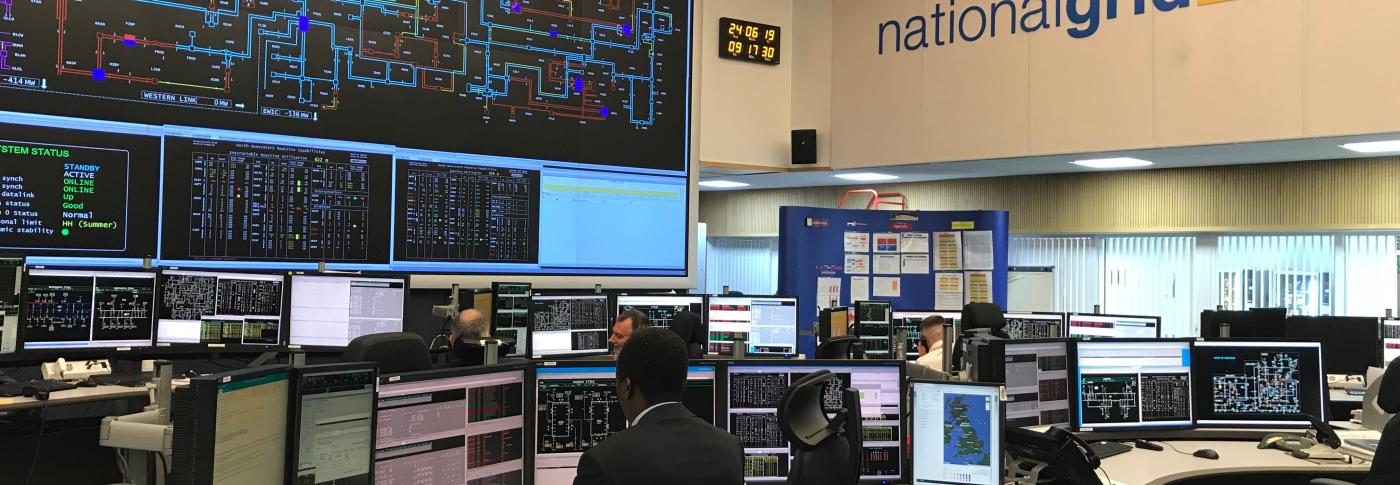As Great Britain’s electricity system operator, our role is to move it around the country from where it’s generated to where it’s needed. We don’t create or sell electricity – there’s an electricity market where that happens.
To do this, we make sure the supply of electricity from the market always matches demand. It’s what we call ‘balancing’ the system, and it’s all managed in our national control room.
Our control room experts have a set of tools at their disposal to help make this happen – the main one being the balancing mechanism – but it requires continuous communication with the electricity market, where the electricity is being created.
This might mean asking generators to turn power up or down. Or we might ask them to increase or decrease demand.
These notices are a routine way that we operate the system, and they don’t mean that electricity supply is at risk
Because our analysts are constantly forecasting how much electricity will be needed at a given time – and providing this forecast to the market – normally only small adjustments will need to be made to match supply with demand.
If demand or generation don’t happen as we forecast, we may have too much power or not enough power on the system at a given time.
Occasionally, if we’re not able to match supply and demand through the normal mechanisms, we’ll send a more formal message to the electricity market to let them know.
These messages are sometimes referred to as system warnings or notices. They’re a routine way that we communicate to the market and operate the system, and they don’t mean that electricity supply is at risk.
We’re simply telling the market what we need.
What are the main notices we might issue, and why?
System notices are more commonly associated with managing winter’s higher electricity demands.
If we can see that our normal safety margin for operating the system is not as big as we’d like, and we can’t address it through the normal mechanisms, then we would consider issuing an Electricity Margin Notice (EMN).
Find out more about why our operating margin is important
This doesn’t mean we don’t have enough electricity to meet demand; it just means we’d like a larger cushion of spare capacity, and we want the market to provide it.
If our safety margins for operating the system are reduced, a Capacity Market Notices (CMN) might also be issued as an alert to providers in the capacity market.
What’s the difference between an EMN and a CMN?
While EMNs and CMNs are based on the same fundamental data – for example generator availability and demand forecasts – they are issued based on different thresholds and lead times.
EMNs are issued by our control room using operational and engineering judgements, and are based on our experts’ experience, skill and knowledge of managing the electricity system (and taking account of a range of factors they have a live view of in the control room).
CMNs differ in that they are triggered automatically four hours ahead of real-time based on specific industry data about the system’s safety margin.
This means that EMNs and CMNs can sometimes be issued and active at different times. That’s normal – they are different signals being communicated to different parts of the electricity market.
The graphic below is for illustrative purposes only to show when – and why – an EMN and CMN might be issued during the 24 hours up to real-time, and is not based on real data. The coloured line indicates the forecast buffer of surplus capacity above demand and the operating margin that we’re required to hold to operate the system at real-time.
Click here to enlarge the graphic
Other system notices
In extremely rare and unusual circumstances where forecast demand for electricity is greater than the levels of supply available the margin notices above might be followed by a High Risk of Demand Control (HRDR) or Demand Control Imminent (DCI) notification.
In the unlikely event of us instructing Distribution Network Operators (DNOs) to begin demand control, they might reduce voltage to manage demand without affecting supply, or – in more severe situations – they might temporarily disconnect some consumers through a controlled process to reduce electricity demand on the system.
What if we have too much power?
It’s just as important for us to manage lower demands for electricity as it is to manage winter's peak demands. It's a different set of challenges that we plan for, and which our experts managed during 2020’s lockdown periods.
At times of low demand, or in periods where less controllable generation connected directly to distribution networks makes up more of the supply, we might identify that we need some additional flexibility on the system.
We may issue what we call a Negative Reserve Active Power Margin (NRAPM) notice. It’s a way to tell power stations that we might need them to turn down output to retain our safety margin, and we’d expect them to respond. NRAPM notices are rare – a small number of local NRAPMs have been issued, and none at a national level.
We have considerable experience and expertise operating the system safely and responsibly in all of the scenarios above. Moving energy industry participants to make sure we can balance supply and demand is our day job, and something we’re accustomed to doing.
Whatever the time of year, you can rest assured that our expert team of control engineers are working 24/7 to keep electricity flowing to where you need it.

